Estimated reading time: 07 minutes.
May/2015 - The Voigtländer Nokton 25mm f/0.95 for Micro Four Thirds is one of the most interesting pieces of my kit. With a huge f/0.95 aperture, it allow over an extra full stop of light to the camera, compared to the f/1.4; the limit of most “large aperture primes” on the market. If f/1.2 is high-end and f/1 is exotic when it happens, the f/0.95 is obscene. You can count how many lenses offer this aperture: the US$10.000 german Leica Noctilux-M 50mm, the chinese SLR Hyperprime and Mitakon Zhongyi, and the fantastic four Nokton 10.5, 17.5, 25 and 45mm from Cosina/Japan.
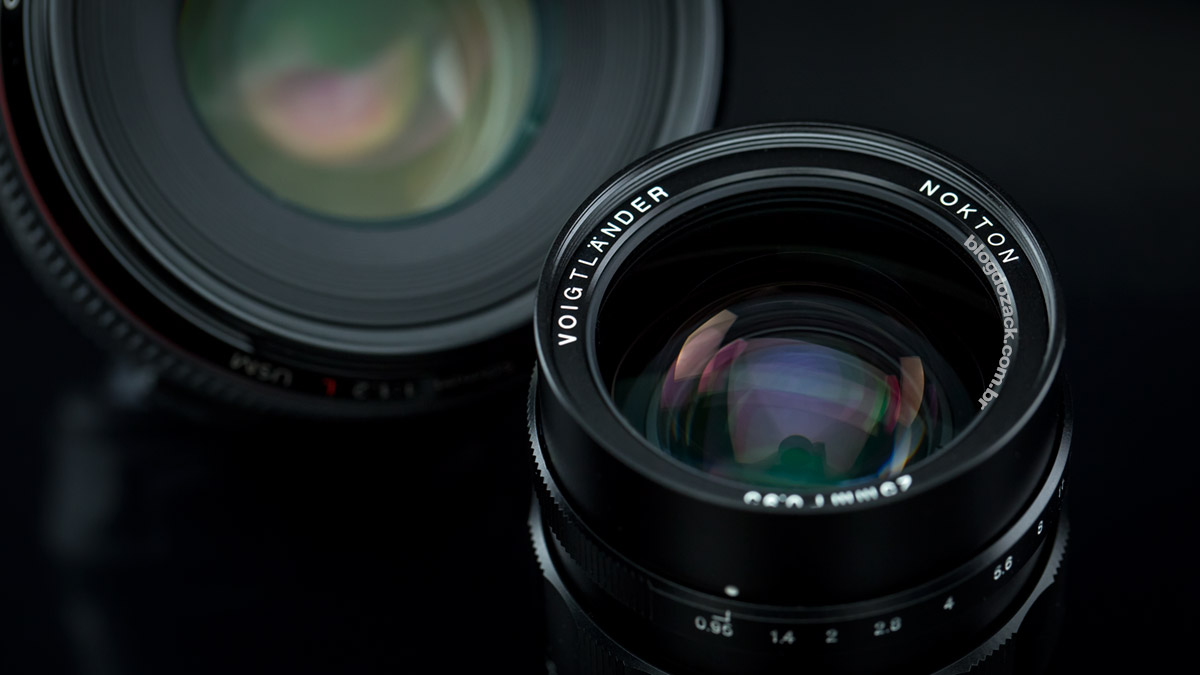
Together with the Canon EF 50mm f/1.2L USM: both front elements are the same size. O_O
Imagine a night scene. Set your ISO to a modest “800”. And crank open a f/0.95 lens. The shutter speed jumps to 1/200 solely with the street lights, and 1/500 around comercial areas, with lots of neons and shopping windows. You can freeze the action on places you can barely see where you’re going, without boosting the ISO and the noise that comes with it. And the larger-than-focal-length aperture allow for an extremely shallow depth of field, easily isolating your subject from the background. It’s just the eyes in focus on a portrait, or a single person around the streets.
Announced by Cosina in 2010, it’s the first of four “Nokton” lenses that solved an old Micro Four Thirds problem: the lack of equivalent options for the DSLR “look”. All 10.5mm, 17.5mm, 25mm and 45mm “f/0.95” can render on the mirrorless format the same shallow DoF look from APS-C or full frame DSLR. And with the same framing of a 50mm on the 135 format, the 25mm MFT is what we call a “standard lens”, including the minimum scenery possible not to completely isolate your subject. It’s the safest bet for portraits and contextual street photography.

“Shopping” with the DMC-GF3 at f/0.95 1/250 ISO160: very shallow depth of field on a non-full frame camera.
It got on vlog do zack in 2011 as my first mirrorless experience on the Micro Four Thirds format. I bought a Panasonic GF3 to make friends with my 5D Mark II, and the Lumix 14mm f/2.5 ASPH kit lens didn’t really gave me the look I wanted from a “large sensor” compact (in terms). I knew the f/0.95 would do it and after a long search in Hong Kong, I found it on a dubious store, one of those places that sell smoothie blenders on the same counter as digital cameras. I bought it immediately and now you read all about my largest aperture prime. Nice reading!
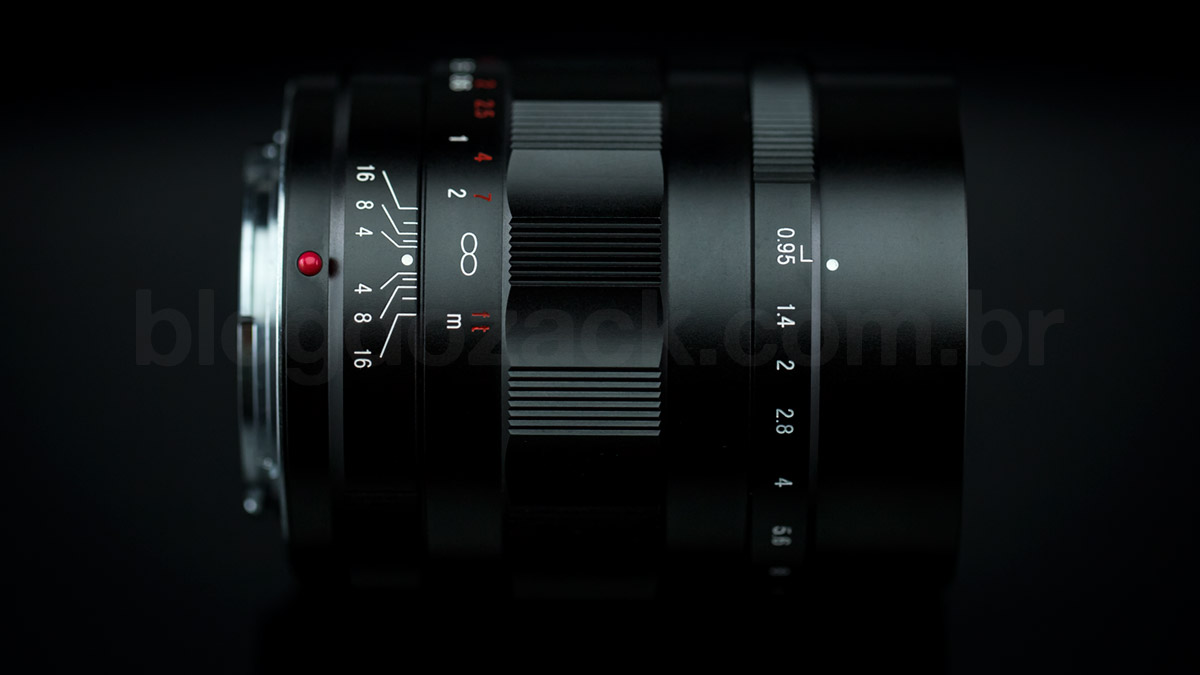
At 435g of 11 elements in 8 groups, the Nokton 25mm f/0.95 is the antithesis of the MFT format. Too heavy and too long (60x70mm), it is front heavy even on larger cameras like the Panasonic’s GH and Olympus OM-D, thought with a portability in mind that no DSLR feature. The all manual operation is also different, depending on a photographer that knows how to use the aperture and set the focus one picture at a time. It is old school on a miniaturised, modern, easy to use equipment. Mounted on the DMC-GF3, it will do low light photography where most DSLR won’t.
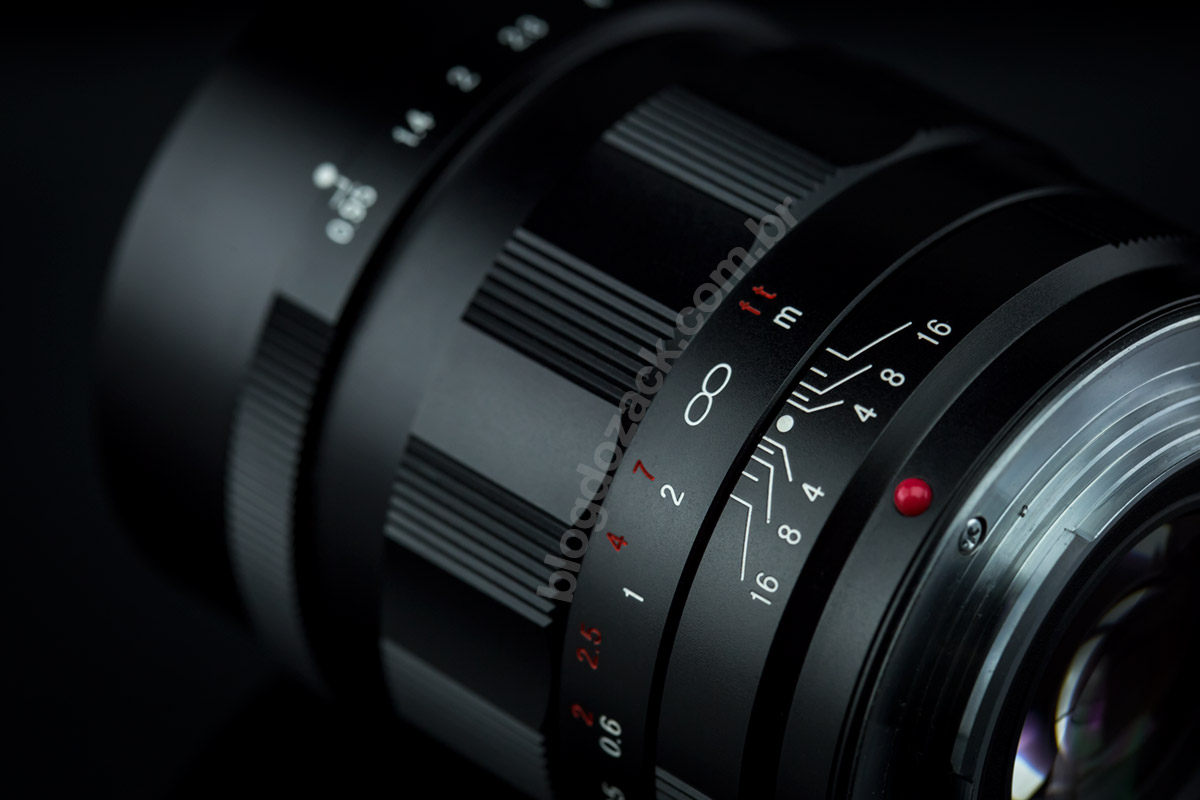
Its design is from the same school of other Cosina-made lenses: the M mount Zeiss. The all metal body features the unique focusing ring, with engraved finger grooves instead of a rubberised grip. At the front the aperture ring goes from f/0.95 to f/16 with half steps. The numbers are engraved as well and won’t erase after some years. And on the Mark II (not shown) there’s even a step less aperture switch, for smooth video recordings. At the back there’s a “naked” mount with no electronic contacts, so it won’t send the camera distance or aperture data.
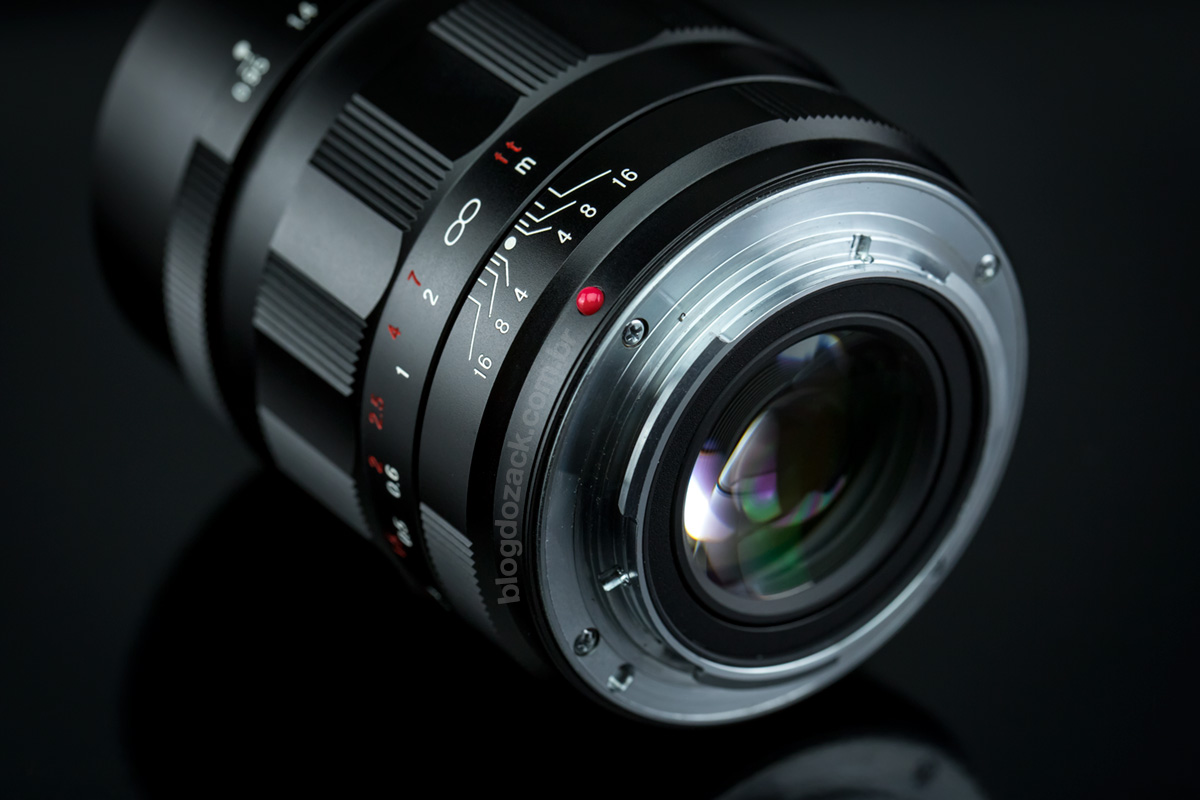
The manual focus is one of the headlines. With engraved feet and meters markings, from infinity to MFD (17cm) it is 270º of rotation; even longer than the 210º EF 85mm f/1.2L II USM. It is extremely precise, mandatory for such a shallow depth of field. For sure in one of these degrees you’ll find the distance you need for sharp focus. But it’s movement is a bit tough besides being smooth, and it’s impossible to quickly turn it. And considering the 7cm lens length, the subject can be focused as little as 10cm in front of the first element. It is practically a built-in macro elbow that grows 1cm.
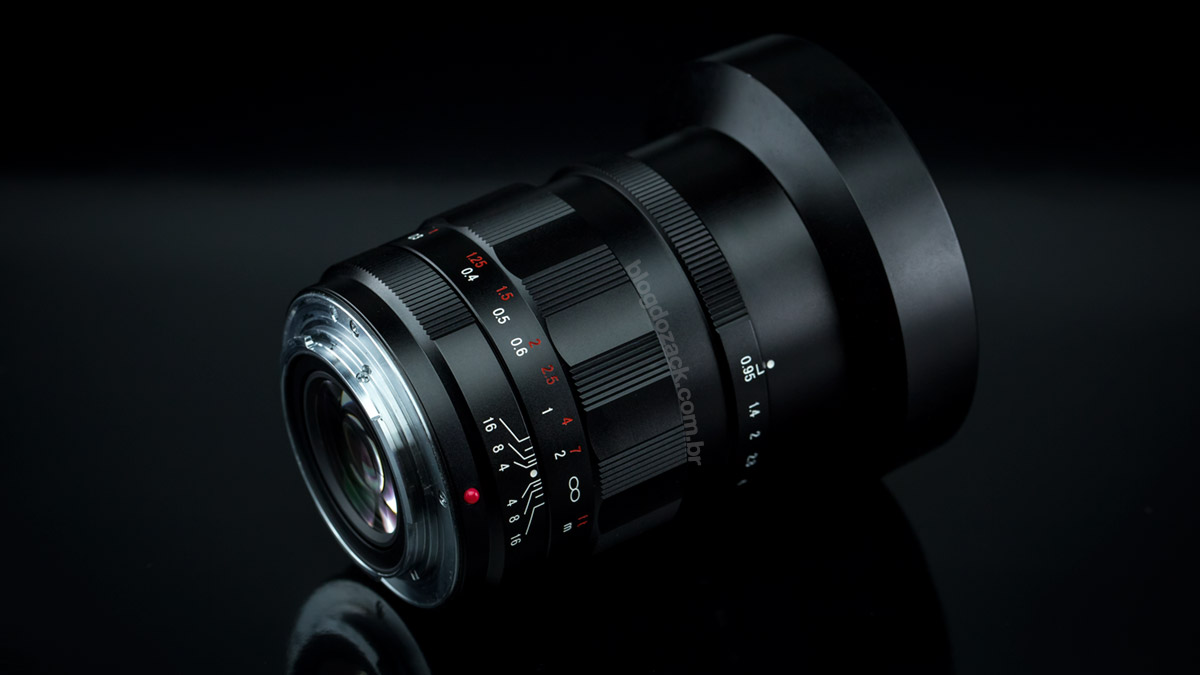
At the front the ø52mm filters screw on a metal thread and won’t rotate during focusing. The also metal included lens hood uses this thread, and adds another ø67mm filter thread. Overall it’s all very Leica-like, with a precise, smooth, all metal operation. It demands your attention on every click, something most DSLR and smartphones don’t. And the US$999 price tag makes it a specialty lens: a different format with a different usability, all for different photos after all.
With a complex 11 elements in 8 groups (one high refractive) optical formula, and 10 blades aperture, the Nokton 25mm f/0.95 delivers the best performance I’ve seen on the Micro Four Thirds format. It’s the large aperture prime lens magic, that gets better by the f/stop. As we start at f/0.95, it’s as soon as f/1.4 (where others start) that it is perfect overall, with enough resolution to generate moiré even on the 12MP GF3. And the OOF is smooth, colourful, with a bokeh filled with personality, besides the common large aperture issues: heavy blooming wide open and all sorts of chromatic aberrations at f/0.95. * All photos with the Panasonic Lumix DMC-GF3.
As the lens doesn’t communicate with the lens, you’ll have to trust me for the wide open shots. The headline goes to the shallow depth of field that most people look for on a large DSLR, but here are delivered on a pocketable, smaller sensor. The heavy background blur easily isolates your subject and the 4:3 ratio files (“Four Thirds”) actually rivals with the medium format. O_o I know it sounds absurd, but the only similar photos I have came from the Mamiya 645 Pro + Sekkor 80mm f/2.8 combo: almost nothing in focus, with 4:3 framing, and isolated subject.
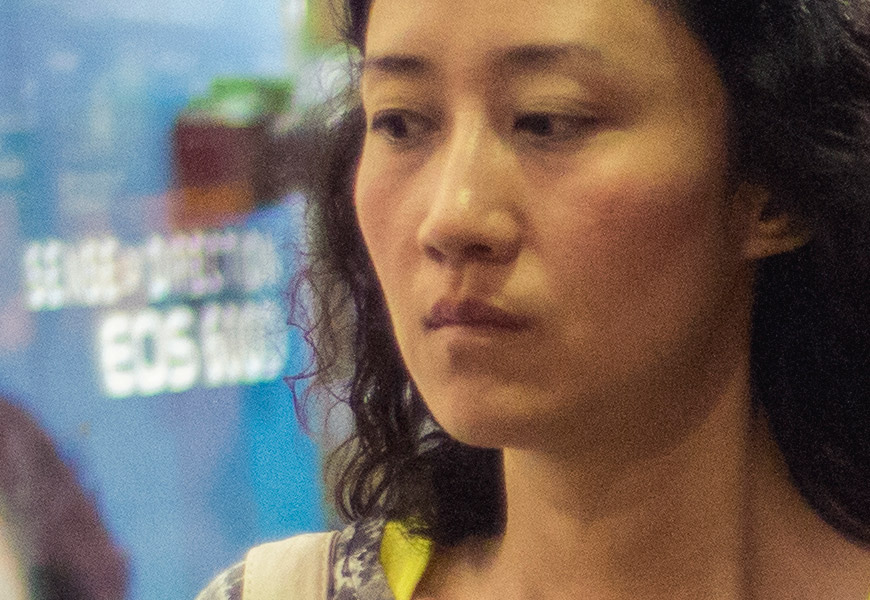
100% crop, only the hair is in focus, not the face.
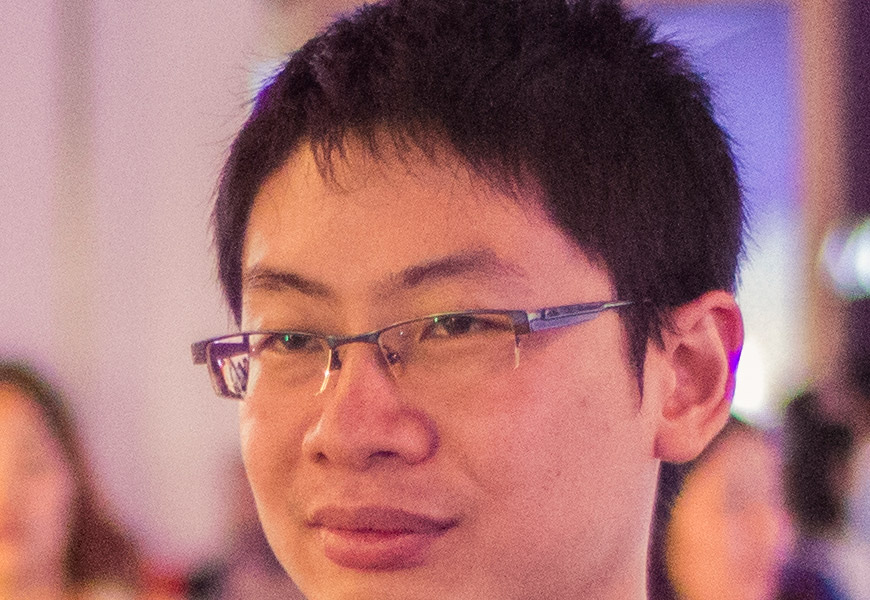
100% crop, nailed focus, high resolution center.

100% crop, heavy corner astigmatism, but the resolution is there.
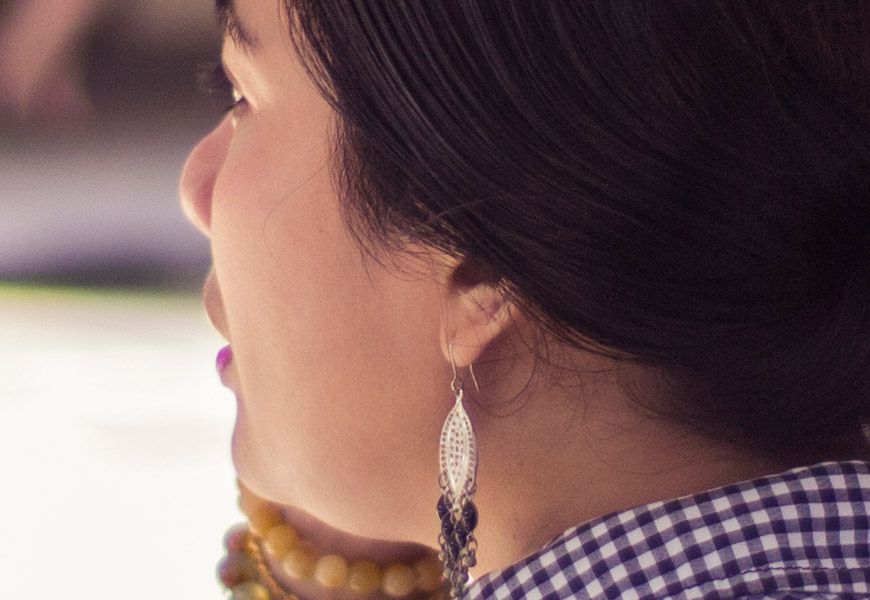
100% crop, perfect center resolution wide open, but not on the minimum focusing distance.
The bokeh sometimes looks great, sometime it doesn’t, but nonetheless it is always present. The astigmatism is noticeable and we see some “water drop” shapes around OOF highlights, and circles with brighter edges. Together with the axial chromatic aberration, that leaves a green cast on the background, and the secondary lateral chromatic aberration, with purple blobs on the focused plane, and we have the so called “personality” I’ve mention. It’s different from the EF 50mm f/1.2L USM. Different from the not-so-creamy EF 50mm f/1.4 USM. Even different from the repetitive-line-eraser Sigma 50mm f/1.4 DG HSM Art. So that’s how I recall the wide open photos: there’s a very strong look to them, with a very thin depth of field and loads of “bokeh balls.’
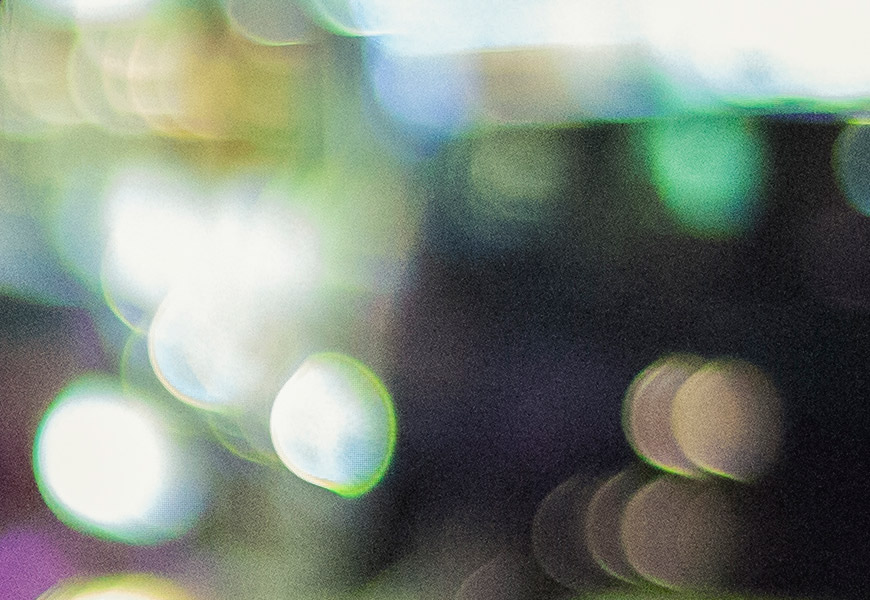
100% crop, bokeh drops.
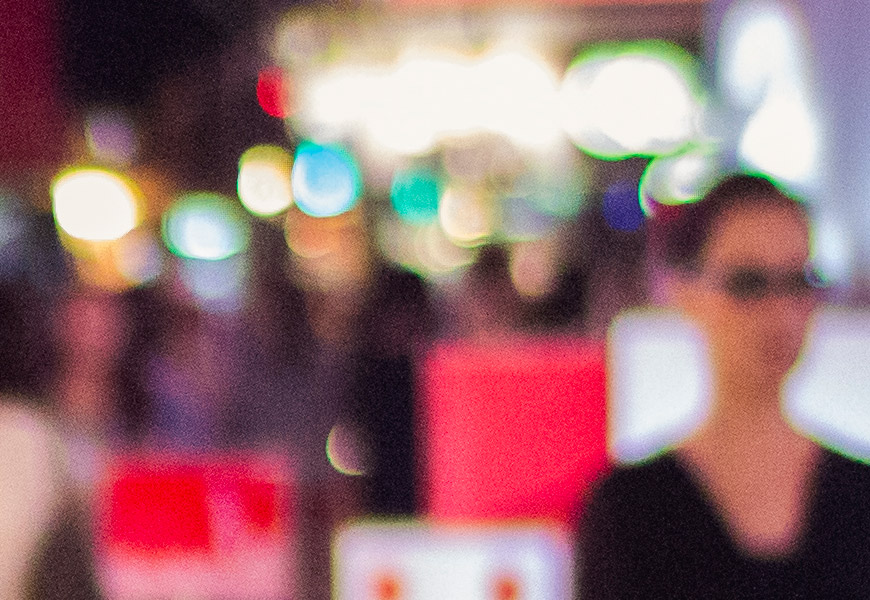
100% crop, smooth enough?
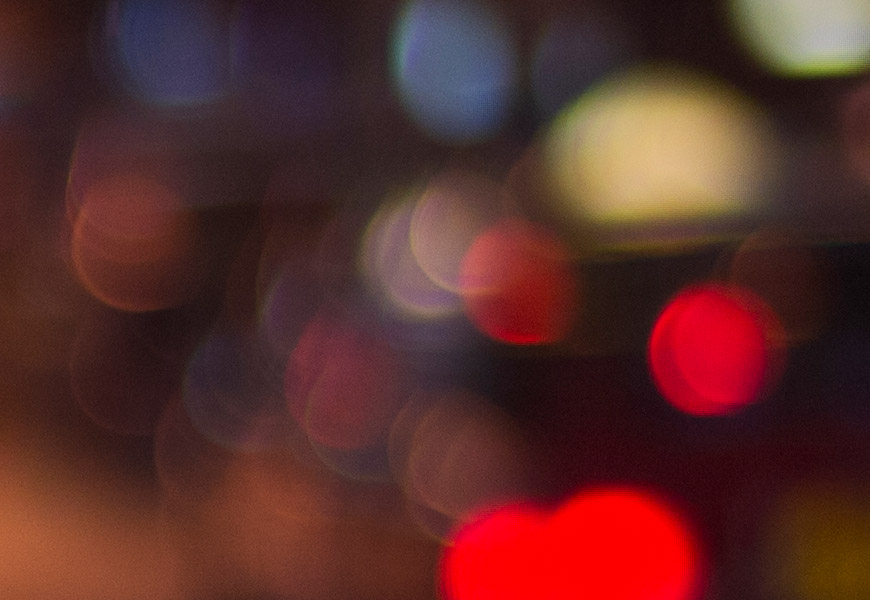
100% crop, pure astigmatism.
Stopping down and we can quickly cleanup the most issues and kill the shallow depth of field; for even more versatility. Files are so sharp it’s impossible not to compare them to DSLRs. The “I need a full frame camera for image quality” era is over. It’s more than enough details for most prints, killing even the best smartphone. Ok, your iPhone 5/6 has a great camera. But it’s JPEG only and the minuscule sensor just can’t compare. The Micro Four Thirds is closer to APS-C/full frame DSLR, rivalling most Canon and Nikon cameras after print.
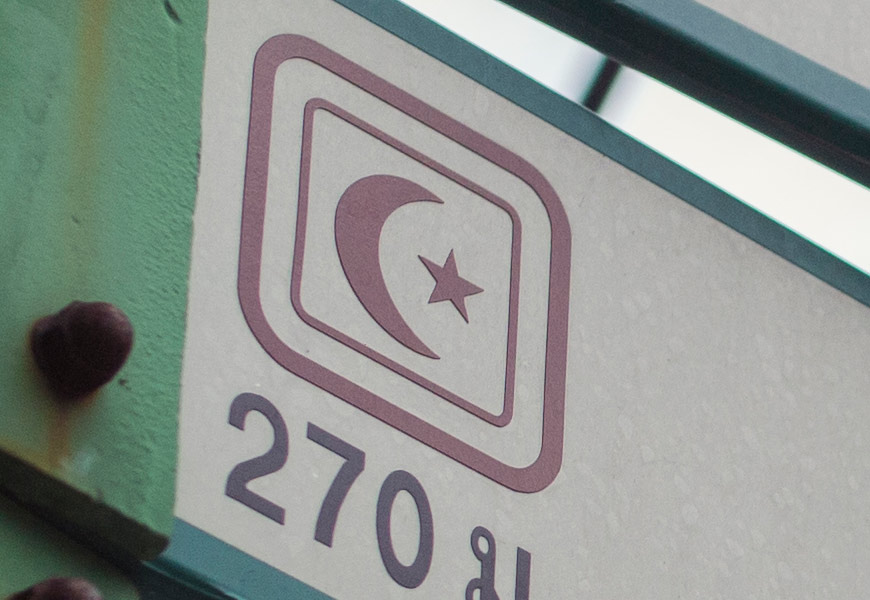
100% crop, competing with most DSLR for resolution figures. O_o

100% crop, try rendering such sharp texture on your iPhone…
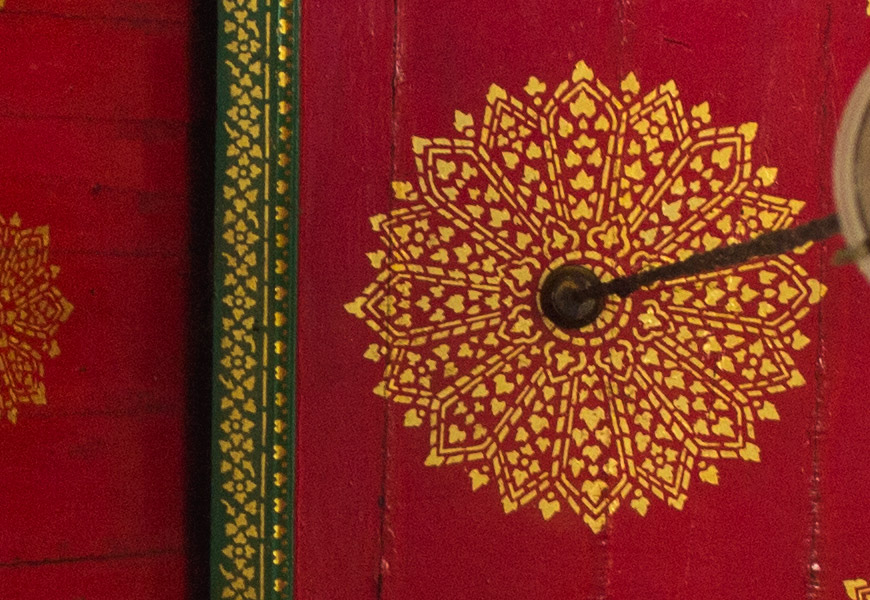
100% crop, a great lens for registering ornaments.
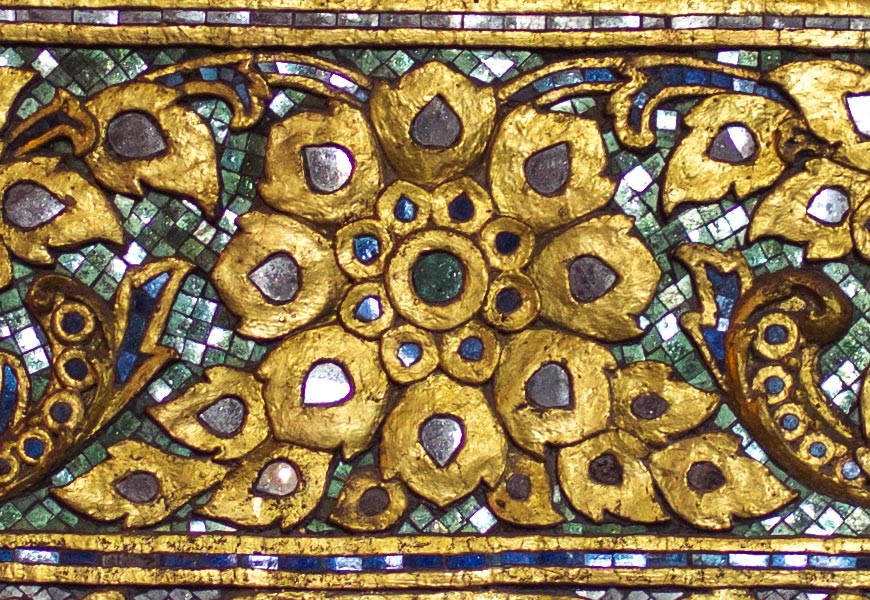
100% crop, high-res of awesomeness. \o/
On the other hand we just can’t compare the colours, and my main complaint about the GF3; and the reason I didn’t add another Nokton to my kit. Everything is either too orange, or either too pink. I miss the deep reds and blues I got used to on Canon’s. Panasonic is a “video company” and they just won’t make their colours look unreal like Canon does. Even on my Lumix 14mm f/2.5 ASPH review I had to convert everything to black and white because the MFT colours just didn’t deliver. So it’s my last opinion about the Nokton: yes, it is great for low light photos. But it just won’t take the place of my Canon 6D, and will remain as the backup camera on my kit.
For US$999 the Voigtländer Nokton price is just too steep to justify the all manual, miniaturised design and, at least on the 25mm f/0.95, the image quality is not that perfect. The look is nice and the resolution is perfect by f/1.4, rivalling most DSLR. But honestly it feels more like a toy than a serious tool, and considering all four models (10.5, 17.5, 25 e 45mm), the complete set would cost more than a professional 24-70mm and 70-200mm f/2.8 kit, no matter the brand. If it’s worth the curiosity? Sure. If I recommend it for everyone? Not at all. Nice shooting!